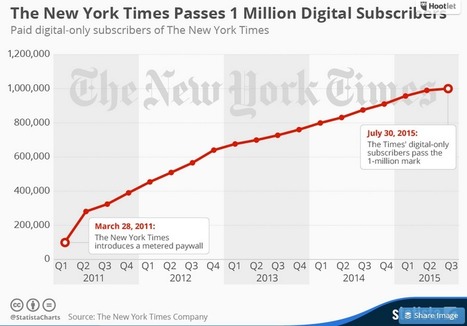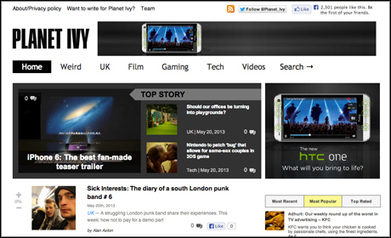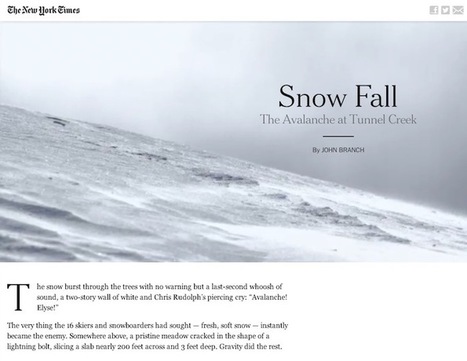When The New York Times announced its digital subscription model in March 2011, it was considered a bold move by many industry experts. The question was: would people really be willing to spend money on digital content that they were used to getting for free?
As it turned out, the answer is yes. Four and a half years after the introduction of its metered paywall, The Times recently announced that its digital subscribers had passed the 1-million mark by the end of July. “We believe that no other news organization has achieved digital subscriber numbers like ours or comparable digital subscription revenue”, the company’s CEO Mark Thompson proudly announced....



 Your new post is loading...
Your new post is loading...
















The chart shows the number of paid digital-only subscribers of The New York Times.